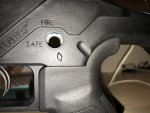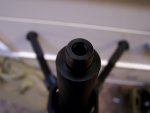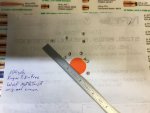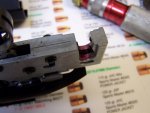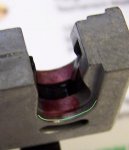Hello,
I have read through the ruger long thread and wanted to stat a short to the point thread on mods/upgrades. Not really a mod but more a strong recommendation. First and foremost complete disassembly with proper cleaning/lube/torque. This rifle had differnt torque on every bolt and some nasty antiseize gunk all through it. As for mods the first and only mod I have done is the tin foil bedding which did seem to have an instant improvement in accuracy. What other mods are people doing? I have read about bending the ejector but havent had any ejection issues. As for the trigger is there a how to on which spring to remove to further decrease trigger pull weight? Also can you bed these style rifles like you would a traditional centerfire? Havent heard of anyone bedding one of these and feel like it would have a much better impact then the aluminum tape. For first upgrade I will go with the shaw barrel and then the timney trigger if they get around to releasing a two stage.
I have read through the ruger long thread and wanted to stat a short to the point thread on mods/upgrades. Not really a mod but more a strong recommendation. First and foremost complete disassembly with proper cleaning/lube/torque. This rifle had differnt torque on every bolt and some nasty antiseize gunk all through it. As for mods the first and only mod I have done is the tin foil bedding which did seem to have an instant improvement in accuracy. What other mods are people doing? I have read about bending the ejector but havent had any ejection issues. As for the trigger is there a how to on which spring to remove to further decrease trigger pull weight? Also can you bed these style rifles like you would a traditional centerfire? Havent heard of anyone bedding one of these and feel like it would have a much better impact then the aluminum tape. For first upgrade I will go with the shaw barrel and then the timney trigger if they get around to releasing a two stage.
Last edited:

